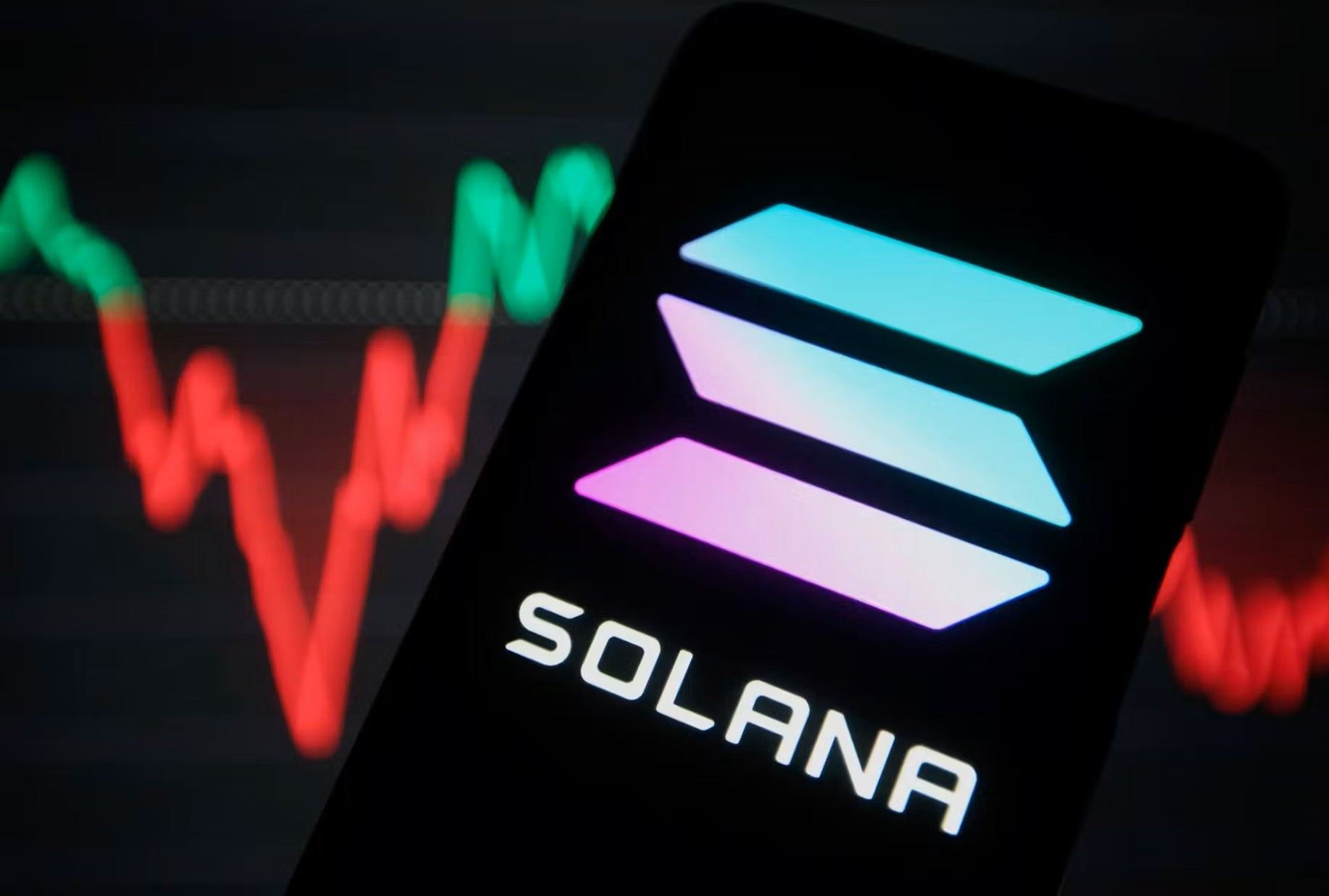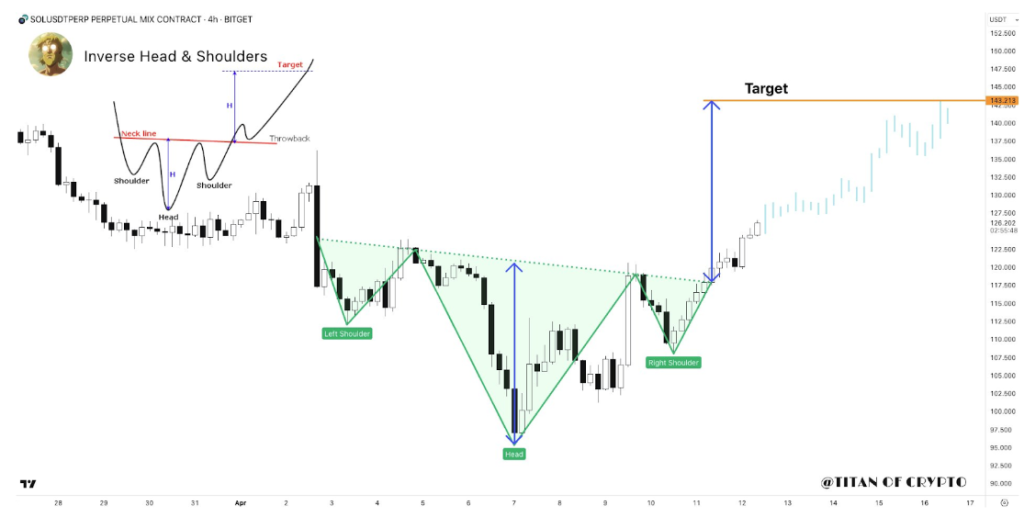Blockchain
Franklin Templeton backs $8m round for stablecoin project Cap
Published
6 days agoon
By
admin

Franklin Templeton, a global asset manager with a growing presence in the crypto and blockchain investment market, has backed an $8 million seed round for Cap.
The asset manager led the investment round, with Ethereum (ETH) based stablecoin project Cap also attracting the participation of multiple leading web3-focused venture capital firms.
In details shared via X, Cap said the investment is a crucial step in its mission to offer a decentralized solution to the problem of yield generation in decentralized finance. This milestone involves the deployment of its protocol across “shared security markets” such as EigenLayer and Symbiotic.
“Cap is pioneering a first of its kind implementation of shared security markets like EigenLayer and Symbiotic to regulate the activities of financial operators. This allows traditional finance institutions and crypto-native firms to generate yield for users, while not directly exposing those users to the risks of their activities,” the protocol’s team posted on X.
Per the Cap protocol team, the project’s solution is available to users looking to tap into shared security marketplaces. This means users can benefit from staked assets on Ethereum. However, Cap’s main focus is the adoption on MegaETH, the layer 2 offering for real-time interaction with opportunities across the ecosystem.
It suggests safe and sustainable yield generation, something that could mean allowing for fresh innovation that beats the current yield-bearing stablecoins.
By being able to outsource yield generation through its stablecoin engine, Cap enables traction across a whole lot of blockchain applications, including DeFi protocols,real-world asset protocols, and liquid funds.
The $8 million seed round will help the stablecoin startup navigate the next phase of its adoption, with this adding to the $1.1 million raised via crowdfunding project Echo. Cap raised its latest financing round with the support of VC firms such as Triton Capital, Flow Traders, GSR and Japanese firm Nomura Group’s Laser Digital.
Source link
You may like


This Week in Crypto Games: Gaming Tokens Crash Out, Eve Frontier Opens Up


Commerce Secretary Lutnick walks back tariff relief on electronics


Gold ETF Inflows Hit Three-Year High as PAXG, XAUT Outperform Wider Crypto Market


Israel’s New Study Shows 51% Of Public Is Interested In Adopting CBDC (Digital Shekel) – Is That So?


Solana Price Eyes Breakout Toward $143 As Inverse Head & Shoulders Pattern Takes Shape On 4-hour Chart


Crypto malware silently steals ETH, XRP, SOL from wallets
Altcoin
Solana Price Eyes Breakout Toward $143 As Inverse Head & Shoulders Pattern Takes Shape On 4-hour Chart
Published
5 hours agoon
April 13, 2025By
admin
Reason to trust

Strict editorial policy that focuses on accuracy, relevance, and impartiality
Created by industry experts and meticulously reviewed
The highest standards in reporting and publishing
Strict editorial policy that focuses on accuracy, relevance, and impartiality
Morbi pretium leo et nisl aliquam mollis. Quisque arcu lorem, ultricies quis pellentesque nec, ullamcorper eu odio.
Solana appears to be gearing up for a major technical breakout, with recent price action building up an interesting chart formation. A familiar bullish pattern has formed, and if validated, it could drive the price to a level not seen in recent weeks. This new development was highlighted by popular analyst Titan of Crypto on social media platform X.
Pattern Breakout Sets $143 In Sight
Like every other large market-cap cryptocurrency, Solana has experienced an extended period of price crashes since late February. In the case of Solana, this price crash has been drawing out since January, when it reached an all-time high of $293 during the euphoria surrounding the Official Trump meme coin. Since then, Solana has corrected massively, even reaching a low of $97 on April 7.
Related Reading
The price action before and after this $97 low has created an interesting formation on the 4-hour candlestick timeframe chart. As crypto analyst Titan of Crypto noted, this formation is enough to send Solana back up to $143.
At the heart of the latest bullish outlook is a clearly defined inverse head and shoulders structure, which is known for its reliability in signaling a reversal from a downtrend to a bullish breakout. The left shoulder of the pattern began forming in early April as Solana attempted to rebound from sub-$110 levels. The subsequent drop to the $96 bottom on April 7 formed the head of the structure. From there, a recovery started as buyers cautiously stepped back in, giving rise to the right shoulder.
The breakout of the neckline resistance has taken place in the past 24 hours. With this in mind, Titan of Crypto predicted that $143 becomes the next logical destination based on the measured move from the head to the neckline.

Image From X: Titan of Crypto
Momentum Strengthens With Structure Confirmation
Looking at the chart shared by the analyst, the momentum behind Solana’s price movement appears to be gaining strength. Trading volume is an important metric in evaluating the strength of a breakout, and the volume accompanying the recent breakout above the neckline seemingly confirms it.
Particularly, Solana has seen a 5.3% increase in its price during the past 24 hours, with trading volume surging by 3.76% within this timeframe to $4.21 billion.
Although it is common to see a throwback or minor consolidation just above the neckline, the projected path suggests continued upside as long as price action holds above that key breakout zone.
Related Reading
At the time of writing, Solana is trading at $129, 10% away from reaching this inverse head-and-shoulder target. A move to $143 would not only represent a meaningful recovery from April’s lows but could also improve the confidence in Solana’s price trajectory moving into Q2. The next outlook is what happens after it reaches this target of $143, which will depend on the general market sentiment.
Featured image from The Information, chart from TradingView
Source link
Blockchain
Web3 search engine can reshape the internet’s future
Published
4 days agoon
April 10, 2025By
admin
Disclosure: The views and opinions expressed here belong solely to the author and do not represent the views and opinions of crypto.news’ editorial.
The internet is at a crossroads. People are continuing to express their frustration and dissatisfaction with the internet—double that of what they felt 20 years ago—as centralized platforms are facing increasing scrutiny for their opaque algorithms, data exploitation, and bias in content curation.
Most online platforms today run on web2, where FAANG companies—Meta, formerly known as Facebook, Amazon, Apple, Netflix, and Alphabet, formerly known as Google—control the data, serve ads, and track users for profit. Users are ultimately the product, and while these companies have added billions in market cap by turning users into the product, this is far from the best model for creating a sustainable knowledge engine like the internet. Participants in the internet ecosystem are starting to wake up to the fact that this model doesn’t really work for anyone except those FAANG companies.
Nowhere are these problems more evident than in search. Search is one of the most fundamental activities on the internet and, thus, stands at the forefront of “gatekept content.” If the internet really is our collective knowledge engine, then search is the first step in acquiring that knowledge.
It is sometimes even the last and only step in using the internet to acquire knowledge, considering that the first result on a Google page has a clickthrough rate of over 25 percent and the tenth result, proportionately, only has a tenth of that. Presumably, a fraction of that fraction even makes it to the second page of results.
Now, consider Google’s prominent position in all of search. Even while Google’s search market share last year dropped below 90 percent for the first time in 10 years, it is still within the range of the popular vote total for a third-world dictator. So, the One True Result that has been served up by Google’s algorithm is getting a quarter of the traffic for the search engine that still holds somewhere in the area of 90 percent of the search engine market share. That’s a lot of opaque and centralized power centered in one private company.
Even while competitors like DuckDuckGo and Bing try to carve out some of their own market share by offering AI-powered search or increased privacy, as centralized companies, they fundamentally present the same problem Google does, without the market share. The integrity of our search results has never been more crucial, and we can’t leave it to web2 structures to be good custodians of that integrity, especially when the priorities of those structures to protect their users can turn on a dime.
The solution is here: Enter web3
How do we put how information is organized back into the hands of users, especially as the search engines promise to become even more inscrutable with the implementation of AI and the obscuring of sources?
One possible way to put that power back into the hands of users is what has thus far been built with web3. Web3 can allow us to build a decentralized, community-powered search engine while participating in a truly open and trustless search ecosystem. A decentralized node-powered ecosystem can ensure fair, unbiased, and censorship-resistant search results, free from the corporate agendas that have shaped traditional search engines.
Instead of relying on corporations, web3 platforms are permissionless, sovereign, and decentralized. They are powered by blockchain and smart contracts instead of centralized corporate servers that open users to vulnerabilities and data insecurity. Web3 gives users control back over their data, identity, and digital assets.
There are a host of other ways in which web3 can empower the user. These include self-sovereignty, permissionless control of assets without fear of confiscation, self-custodial staking and earning, access for the unbanked, peer-to-peer transfers, and, perhaps most important of all, that fundamental decentralization, which eliminates single points of failure while being resistant to manipulation.
There is also no behavioral profiling, no centralized control, and no data tracking. This means no censorship risk, no suppression of competing voices, and a search experience that respects user privacy.
Users must work to reclaim power
Search engines today function as gatekeepers of information, with centralized platforms deciding which content is amplified, suppressed, or monetized based on user profiles and corporate interests. Users deserve a fairer and ultimately better search experience, one where ranking algorithms are not influenced by personal data, past behavior or profit-driven agendas.
The problem is bound to get worse as the AI race heats up and companies look for new data sources on which to train these AIs. Whatever promises a centralized company might have once made to the user about not tracking or using data, again, these priorities can shift very quickly in something like an AI technology realignment. The beauty of web3 is that the structure of the technology itself prevents such exploitation.
Web3 may seem abstract right now, but it’s not all that different from the kind of technical fluency users needed to acquire as they went from the personal computer to the networked personal computer of web2. Users essentially just have to trade out an encrypted password shared with a central web service (and who knows where else) for an encrypted wallet that only they can control and access. The benefits of full control over assets and data will far outweigh whatever stumbling blocks there are to this learning curve.
Users have shown that they are willing to trade a lot for convenience, but perhaps they’ve reached a breaking point in that bargain. Now is the time for web3 to take advantage.

Timothy Enneking
Timothy Enneking is the CEO of Presearch, a decentralized, privacy-focused, web3 search engine. He was initially invited to join the project seven years ago after he recommended it during a CNBC Asia interview on crypto, and he remained an advisor for four years. He rejoined Presearch in August 2023 when the founder invited him to become the CEO and bring the project to the next level. He is the founder and Principal of Digital Capital Management, LLC (“DCM”), which runs CAF 2017, a crypto trading fund. He is also the founder and managing partner of Psalion, which manages two venture capital funds and a yield farming operation. For nine years ending in June 2024, Mr. Enneking was the Chief Investment Officer of Mana Companies Asset Management, a medium-sized family office (which did not invest in crypto). Prior to those activities, Mr. Enneking founded and managed Tera Capital Fund, a fund of funds focused on Eastern Europe (established in 2004). Simultaneously, in 2013, he was engaged to manage the world’s first Bitcoin fund. Mr. Enneking also has extensive M&A experience, having completed more than 70 transactions with an aggregate transaction value of over US$12 billion. He speaks near-native French and Russian, as well as German. He has five university degrees, all in international business and law.
Source link

Disclosure: The views and opinions expressed here belong solely to the author and do not represent the views and opinions of crypto.news’ editorial.
AI-generated avatars and virtual assistants will revolutionize our digital landscape, powering virtual influencers, workplace stand-ins, and immersive metaverse experiences. Yet, beneath this technological marvel lies a pressing question: who truly owns and controls your digital identity? The reality is stark—most AI avatars are tethered to centralized platforms where corporations hold dominion, exposing users to exploitation, financial fraud, and a profound loss of autonomy. As these digital personas become integral to our virtual lives, the need for a transformative solution has never been more urgent.
Decentralizing AI avatars through blockchain technology and smart contracts emerges as a vital antidote, promising to restore control to individuals in an increasingly virtualized world. The dangers of centralized systems are vividly demonstrated by high-profile abuses that have shaken public trust. In January 2024, a deepfake robocall mimicking U.S. President Joe Biden targeted New Hampshire voters, falsely urging Democrats to skip the primary in a bid to sway the 2024 election. This brazen act of manipulation, which prompted an FCC ruling to ban deepfake robocalls and ignited debates over AI regulation, exposed the fragility of centralized platforms that harbor the data fueling such scams.
The entertainment industry offers another stark warning. In early 2024, explicit deepfake images of Taylor Swift flooded social media, amassing over 45 million views before removal after a 17-hour delay. This incident laid bare the limitations of centralized content moderation, which often falters under pressure, leaving women and public figures disproportionately vulnerable to digital harm. The fallout was swift—Swift’s team condemned the breach, and platforms scrambled to respond, yet the delay highlighted a systemic failure to protect digital likenesses in real-time.
Additionally, Meta’s Oversight Board recently took up cases involving deepfake explicit imageries, noting inconsistent moderation practices— certain content was removed faster than others due to not passing specific community guidelines, highlighting inequities in centralized systems. These examples show how centralized avatar management leaves users powerless and unable to prevent misuse of their digital likeness.
Why AI avatars need to be decentralized
Centralized platforms trap users in ecosystems where their digital identities are subject to exploitation or sudden deactivation at corporate whim. This unchecked dominance shatters the vision of a user-empowered digital future, reducing individuals to mere cogs in a profit-driven machine. Decentralization flips this narrative, fostering self-sovereign identity where users hold the reins, owning and managing their avatars with confidence.
By placing control in the hands of individuals, decentralized systems can curb corporate overreach, ensuring AI avatars reflect their creators’ intent rather than serve as tools for exploitation.
Blockchain-powered AI ownership
Blockchain technology stands as a beacon of hope against these escalating threats. Through on-chain verification, it forges an unalterable record of avatar ownership, forging a secure bond between digital identities and their rightful owners while decisively countering unauthorized deepfake abuse.
This was painfully evident in February 2023, when a French interior designer fell pray in a romance scam: fraudsters wielded AI-generated images and messages to impersonate Brad Pitt, spinning a tale of a fabricated relationship and a fabricated cancer diagnosis that convinced her to part with €830,000—her life savings—before the deception unraveled. Such episodes unveil the dangers of centralized platforms, which hoard user data and become fertile ground for AI-driven fraud, eroding trust and inflicting devastating personal losses. Without a verifiable system to authenticate digital identities, AI-driven deception will only intensify. Users are left defenseless as deepfakes become more sophisticated and harder to detect. The challenge is clear: How can we secure digital avatars against misuse while ensuring individuals, not corporations, maintain control over their online presence?
Yet, blockchain’s potential extends further. Smart contracts bolster this framework by automating rights management, guaranteeing avatars operate with unwavering security and transparency while fortifying defenses against fraud. This comprehensive approach not only shields digital assets from theft but also alleviates the ethical and legal burdens intensified by centralized oversight, equipping users with verifiable dominion over their virtual selves.
A web3 future for AI avatars
Decentralized AI avatars can also drive a vibrant web3 economy, integrating into metaverses, digital workspaces, and decentralized social networks. These avatars can become dynamic assets—representing users in virtual worlds, facilitating remote collaboration, or enabling secure interactions online. Picture a musician selling a unique avatar on a decentralized marketplace or a professional using a blockchain-verified digital twin to authenticate their presence in a virtual meeting. This ecosystem thrives on user ownership, positioning decentralized AI avatars as a foundation for the next digital economy.
The drive to decentralize AI avatars is non-negotiable—centralized systems, exposed by explosive deepfake scandals and crumbling moderation, threaten to dismantle safety and freedom in an AI-drenched world. Blockchain carves a decisive path to empowerment, handing the reins of digital identity back to individuals, not corporate overlords. The clock is ticking: seize control of your digital destiny now, or watch it vanish into a dystopian abyss of corporate domination.

Roman Cyganov
Roman Cyganov is the founder and CEO of Antix, a company at the forefront of web3, AI, and gaming technologies. Recognized by OUTPUT as one of the Top 10 Global Talents, Roman has a rich history of driving technological innovation and redefining how businesses engage with digital audiences. Under his leadership, Antix has developed AIGE, a cutting-edge technology that crafts hyper-realistic AI-powered digital humans, revolutionizing client interactions in the digital space. Roman’s entrepreneurial journey includes co-founding VIVIX Inc., where he served as CCO before his pivotal role at Antix. His career is marked by a successful exit and numerous high-profile ventures that underscore his role as a serial entrepreneur leading the next wave of digital transformation.
Source link

This Week in Crypto Games: Gaming Tokens Crash Out, Eve Frontier Opens Up

Commerce Secretary Lutnick walks back tariff relief on electronics

Gold ETF Inflows Hit Three-Year High as PAXG, XAUT Outperform Wider Crypto Market

Israel’s New Study Shows 51% Of Public Is Interested In Adopting CBDC (Digital Shekel) – Is That So?

Solana Price Eyes Breakout Toward $143 As Inverse Head & Shoulders Pattern Takes Shape On 4-hour Chart

Crypto malware silently steals ETH, XRP, SOL from wallets

Binance Executives Met With US Government Officials To Discuss Easing of Regulatory Supervision: Report

Michael Saylor Hints At Another MicroStrategy Bitcoin Purchase, BTC Price To Rally?

From the Crypto Trenches to the Hill: Why Solana Is Making a Big Push in Washington

Bitcoin price tags $86K as Trump tariff relief boosts breakout odds

Where Top VCs Think Crypto x AI Is Headed Next

India’s Leading Bitcoin And Crypto Exchange Unocoin Integrates Lightning

Solana Triggers Long Thesis After Pushing Above $125 – Start Of A Bigger Rally?

Popcat price surges as exchange reserves fall, profit leaders hold

Crypto Analyst Says Bitcoin Back in Business, Calls for BTC Uptrend if One Support Level Holds

Arthur Hayes, Murad’s Prediction For Meme Coins, AI & DeFi Coins For 2025

Expert Sees Bitcoin Dipping To $50K While Bullish Signs Persist

Aptos Leverages Chainlink To Enhance Scalability and Data Access

Bitcoin Could Rally to $80,000 on the Eve of US Elections

Crypto’s Big Trump Gamble Is Risky

Sonic Now ‘Golden Standard’ of Layer-2s After Scaling Transactions to 16,000+ per Second, Says Andre Cronje

Institutional Investors Go All In on Crypto as 57% Plan to Boost Allocations as Bull Run Heats Up, Sygnum Survey Reveals

Ripple-SEC Case Ends, But These 3 Rivals Could Jump 500x

Has The Bitcoin Price Already Peaked?

A16z-backed Espresso announces mainnet launch of core product

The Future of Bitcoin: Scaling, Institutional Adoption, and Strategic Reserves with Rich Rines

3 Voting Polls Show Why Ripple’s XRP Price Could Hit $10 Soon

Xmas Altcoin Rally Insights by BNM Agent I

Blockchain groups challenge new broker reporting rule

I’m Grateful for Trump’s Embrace of Bitcoin
Trending

 24/7 Cryptocurrency News5 months ago
24/7 Cryptocurrency News5 months agoArthur Hayes, Murad’s Prediction For Meme Coins, AI & DeFi Coins For 2025

 Bitcoin3 months ago
Bitcoin3 months agoExpert Sees Bitcoin Dipping To $50K While Bullish Signs Persist

 24/7 Cryptocurrency News3 months ago
24/7 Cryptocurrency News3 months agoAptos Leverages Chainlink To Enhance Scalability and Data Access

 Bitcoin5 months ago
Bitcoin5 months agoBitcoin Could Rally to $80,000 on the Eve of US Elections

 Opinion5 months ago
Opinion5 months agoCrypto’s Big Trump Gamble Is Risky

 Altcoins2 months ago
Altcoins2 months agoSonic Now ‘Golden Standard’ of Layer-2s After Scaling Transactions to 16,000+ per Second, Says Andre Cronje

 Bitcoin5 months ago
Bitcoin5 months agoInstitutional Investors Go All In on Crypto as 57% Plan to Boost Allocations as Bull Run Heats Up, Sygnum Survey Reveals

 Price analysis5 months ago
Price analysis5 months agoRipple-SEC Case Ends, But These 3 Rivals Could Jump 500x


